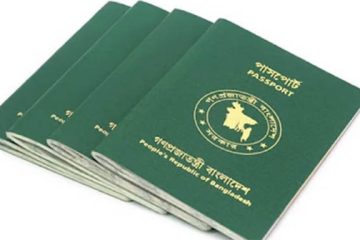Deaths of at least 78 border guards, most of whom were detained after the BDR carnage in 2009, still remain a big mystery as most of them died of “heart attack” but had injury marks in their bodies.
As many as 4,089 accused mutineers were detained in the capital following the carnage at the former Bangladesh Rifles headquarters where 74 people including 57 army officers were killed.
Allegations were rife that many of the detained were ruthlessly tortured during interrogation by army, Rapid Action Battalion and other government agency personnel before they were sent to prison.
Despite widespread controversy and repeated urge from the rights bodies for proper investigation into the deaths, the government only issued death certificates to settle the matter.
Home Secretary CQK Mustaq Ahmed told The Daily Star the jail authorities concerned had conducted investigations, so the ministry did not initiate further probes.
The home ministry had no plan to further investigate the incidents, said a top official preferring anonymity.
Among the 78 dead, 51 died in 2009, 20 in 2010 and seven in 2011 at different jails or while on duty, according to Ain O Salish Kendra [ASK], a rights watchdog.
At least 10 of them were said to have committed suicide during the period.
Most of the dead were accused in the cases filed in connection with the BDR [now renamed Border Guard Bangladesh] mutiny, ASK report said.
A good number of bodies had injury marks, said the report referring to police inquest reports, morgue sources and the account of family members.
For instance, Havilder Kazi Saidur Rahman, 45, was taken to Dhaka Medical College Hospital with injury marks all over his body where doctors declared him dead on April 16, 2009.
Lance Naik Mobarak Hossain, 40, was taken to DMCH from the HQ with bruises in his body on March 23, 2009. He too was declared dead.
The border guards authorities, in most cases, issued press releases stating nearly similar causes behind the deaths like ‘irreversible cardio-respiratory failure due to acute MI type-3′ or ‘cardio-respiratory failure due to acute myocardial infarction (MI) and hypertension’.
Several rights bodies including the National Human Rights Commission (NHRC) demanded detailed explanations for each death and access of rights organisations and the media to BGB Pilkhana headquarters and the jails concerned to see the condition of the accused in vain.
Talking to The Daily Star, NHRC Chairman Mizanur Rahman said, “Such treatment [BDR jawans’ custodial deaths] was contrary to natural justice.
“I received many allegations that BDR jawans were tortured to death. I asked the home ministry repeatedly to investigate the incidents, but my letters went unheeded,” he added.
He further said immediate after the mutiny he had visited Khagrachhari prison where a good number of BDR jawans were kept detained.
“Many jawans stated horrific torture inflicted on them before they were handed over to the prison,” he said.
-With The Daily Star input




















